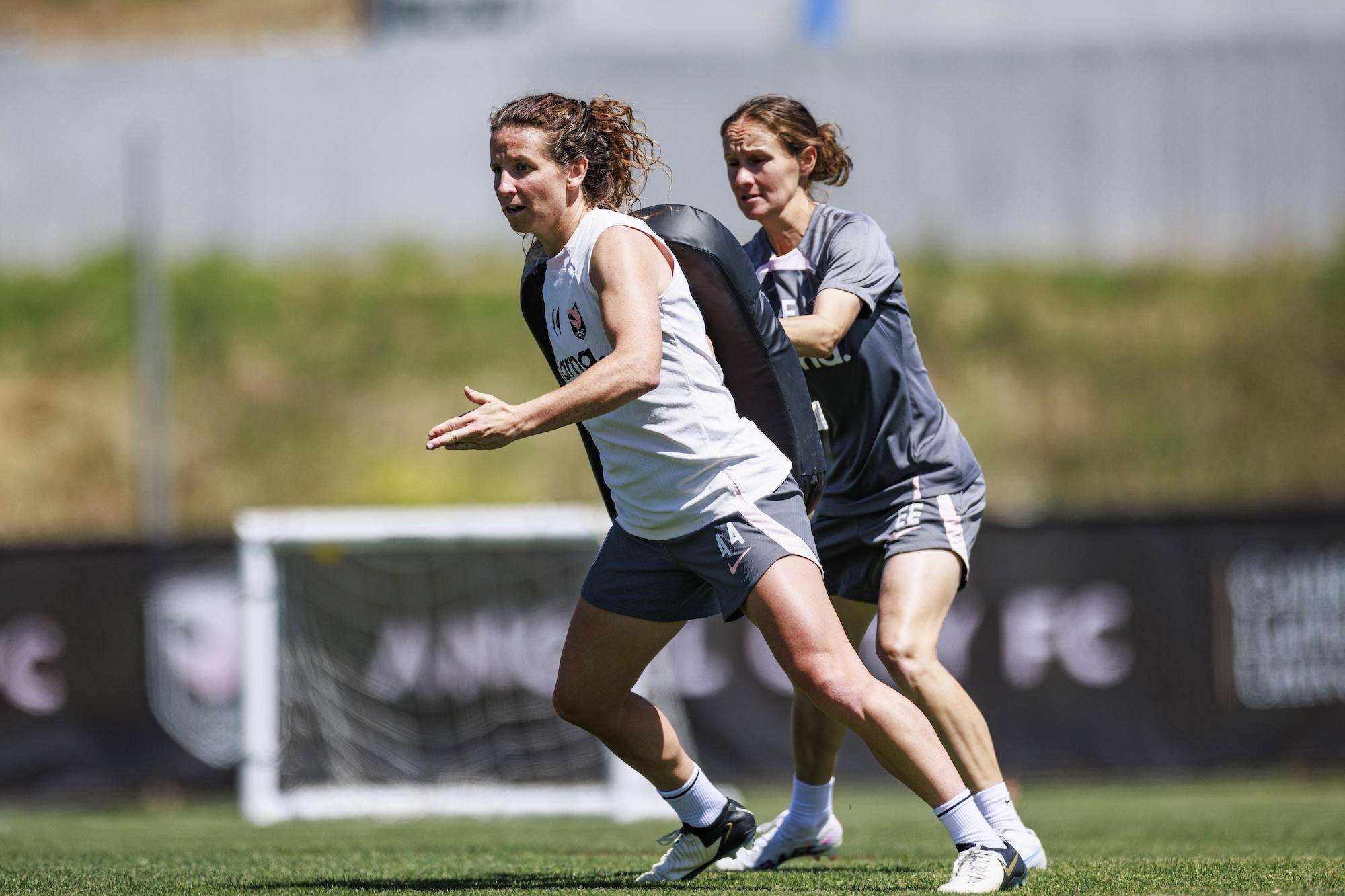
Welcome to The Breakdown, where Angel City players break down the basics of the game to help you understand what they do on the pitch. This week, we talked to defender Elizabeth Eddy, who has played both as a winger and an attacking midfielder at different points in her career.
AngelCity.com: Let’s start with the basics: what is a winger, and what qualities do they need to be successful?
Elizabeth Eddy: A winger is a wide player who enjoys going one on one and who loves the challenge and the isolation of that—where either you expose somebody else or you get exposed yourself—and that sounds fun to the person. I think it takes a pretty high level of confidence not only in your own abilities, but in your ability to read moments and decisions and recognize the defenders and the positional advantages and then play your hand well. Basically, you get to beat defenders and score goals.
A lot of being a winger is understanding space, positioning, and timing. Once you understand those three concepts and you can recognize when you have the advantage in any of those three, then you can be one of the best in the world.
ACFC: What’s different about the role of a winger as opposed to a central forward or a striker?
EE: The biggest thing in soccer on the attack is recognizing your advantages—whether it's positional, if it's individual, if it's technical—and width would be a positional advantage. That can be provided by the winger—multiple other players can also provide it, depending on the situation—but the wingers, primarily, do provide the width on offense.
I enjoy playing on the wing because you're the one that's closest to the sideline, so you're facing the field and you're going at it from an offensive, aggressive attacking mindset, versus being more central on the field, where there's a lot more things that are happening behind you and around you.
Another aspect of playing winger that I enjoy is when you're not the one providing width—maybe a [central midfielder comes out wide]—and you’re dropping inside [towards the center of the field]. The point is playing in seam 2 [the space between the opposing team’s midfielders and defenders] to or in the pockets, and timing your movement into those spaces.
ACFC: Say more about that. When would a winger cut inside (sometimes called “inverting”) while attacking?
EE: It's usually a timing thing. For example, if as the ball is being switched to your side, your outside back is getting high and wide, then good timing to rotate [inside]. Sometimes if it's a slower switch and your [attacking midfielder] pops out wide, then you'd invert as well [so they’re wide and you’re central]. Those are two of the more common scenarios.
ACFC: As a winger, what do you need from your teammates to be successful?
EE: You need really quality passing. So if you're the widest player and you're in an advantageous position—like you're almost even with the opposing outside back—you want your center back to play you a really good, properly paced, hard ball on the ground to your front foot. (If I’m on the left side, that’s my left foot—that's the foot that’s highest and widest on the field). Then I have an advantage, where you can either one-touch cut past the outside back and get behind them, or if the defense recovers quick, then I can cut inside and beat them. But it’s that pass that was so quality from a teammate that allows me to continue on with advantage. If you don't have a good enough pass and you lose the advantage, then we either reset or you have to like get really creative and have some bit of flavor to like get out of something.
And it’s not just quality passing but also having chess-level thinking to create the moment so that the pass can happen. Or maybe it’s not even a hard pass. Sometimes you need your midfielder or center back to look a certain direction and disguise a pass splitting the center back and outside back so that you can make that run. So it's very nuanced thinking and you need really good passing both in terms of technical ability and tactical awareness.

